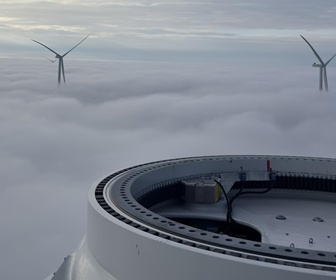 Iberdrola has launched two initiatives on several wind farms to improve the visibility of their wind turbines and to deter certain species of birds from the areas of influence around the projects. The solutions are based on studies conducted by Norwegian research centres and experiences at French airports.
Iberdrola has launched two initiatives on several wind farms to improve the visibility of their wind turbines and to deter certain species of birds from the areas of influence around the projects. The solutions are based on studies conducted by Norwegian research centres and experiences at French airports.One such initiative involves painting one of the three blades black on several wind turbines on wind farms in Cavar (111 MW) in Navarre; and Zorreras (20 MW) in Zahara de los Atunes (Cádiz) in Andalusia. The project, which will be rolled out in some of the company's other wind farms, is based on a study published by the Norwegian Institute for Nature Research, which estimates a 70% reduction in the number of birds spotted after applying this measure. The solution creates more contrast between the blades and makes them easier for birds to see. This work to adapt the wind turbines takes place 100 metres above the ground on fully assembled wind turbines and requires sanding, cleaning and painting the blades. The tasks are undertaken when there is little wind and no rain to ensure the safety of the specialised wind turbine maintenance and operation workers. Each blade on the Cavar wind turbines is 65 metres long and up to 14 metres wide, so it can take a week to paint them.
The second of these initiatives consists of marking wind turbine towers with two vinyl transfers that look like staring eyes. These one-metre-diameter concentric circles are fixed at between 3.5 and four metres from the base of the wind turbines. It has been shown that sticking these black shapes to the white base of the wind turbine tower is a deterrent to birds of prey. The solution has been implemented in seven wind farms in Burgos and has involved applying these vinyl shapes to more than 60 wind turbines on the Ballestas-Casetona, Cotera, Páramo Vega, Urbel del Castillo, Valdeporres, Viñas and Fuente Blanca wind farms. The project does not affect the structure of the wind turbine and has no impact on the operational systems or electricity produced by these production plants. This method has been tried and tested at Lourdes-Tarbes-Pyrénnés airport in south-eastern France and has proven efficient for keeping birds away. A 65% reduction in the number of birds of prey spotted in the airport area was observed when the vinyl shapes were used.










